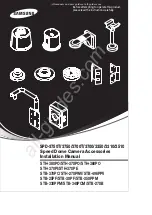
Operating Manual
ARS31(Pro)-UMB
G. Lufft Mess- und Regeltechnik GmbH, Fellbach, Germany
15
5 Maintenance
Maintenance should be carried out on the road sensor once annually. This includes the
visual inspection of the housing. It is recommended to clean the surface of the sensor if it
is heavily soiled. Sensor replacement is recommended in the event of significant
mechanical damage to the sensor. This also applies if the sensor’s plastic insert is
severely worn.
5.1
Replacing the sensor system
If the road sensor’s plastic insert becomes unusable due to mechanical effects, or the
sensor is damaged, the plastic insert can be replaced with no need to replace the entire
housing.
Attention: Only replace the sensor system when the road is dry
To uninstall the plastic insert, remove all six hexagon socket head screws. There is a small
opening on the edge of the cover suitable for inserting a screwdriver. This allows you to lift
out the plastic insert. Make sure that the connection cable on the underside of the sensor
has not broken off. The connectors must be pulled out without putting a strain on the cable.
The housing must be cleaned thoroughly before installing the new sensor. Even small
impurities on the seat of the seal can cause the sensor to fail in the long term. No moisture
must be trapped in the housing!
On connecting the connector to the new sensor, make sure that you do not touch the
sensor electronics. Electrostatic discharge (ESD) destroys the sensor.
The seal must be greased with silicone grease prior to insertion. The seal must not bend
out of line on installing the plastic cover. You should also make sure that the thermal
conducting foil on the under edge of the housing is not displaced during installation. The
plastic cover must be inserted into the housing without the use of force. There is only
one
possible installation position
: The apertures on the copper head of the sensor must
point in the direction of the cable glands on the housing. The threads of the fixing screws
must be greased. First the screws are attached loosely and then tightened cross-wise
(torque 2 Nm).
















































